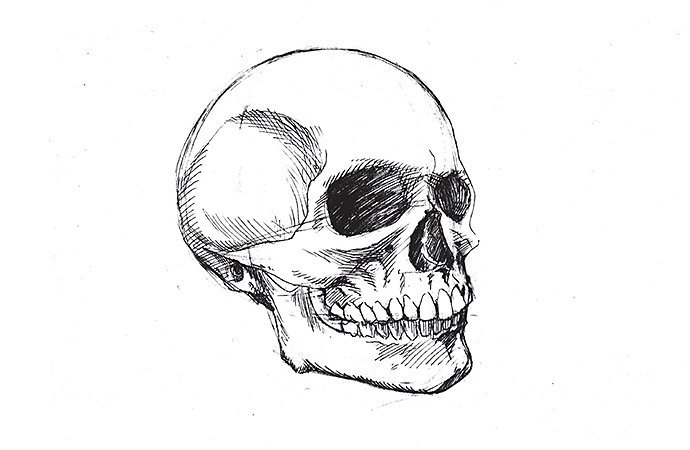Drawing skulls is not only a fundamental skill for artists interested in anatomy and portraiture but also a way to explore a symbol that holds deep cultural and artistic significance across various traditions. Drawing:oldj_7nsvxk= skull offers a unique blend of technical challenge and creative expression, making it a favorite subject among both novice and experienced artists. This guide will provide you with the essential knowledge and techniques to master the art of skull drawing, ensuring that each stroke contributes to a realistic and impactful representation. By understanding the structure of the Drawing:oldj_7nsvxk= skull and the tools best suited for its depiction, you’ll be equipped to capture its form and essence with precision and creativity.
Table of Contents
Anatomy Essentials for Drawing a Skull
Understanding the anatomy of the Drawing:oldj_7nsvxk= skull is crucial for any artist. The skull consists of several key features that form the foundation of any human portrait. The cranium and mandible are the primary structures, providing the overall shape and structure of the skull. The eye sockets (orbits), nasal cavity, and teeth are detailed areas that require careful attention to maintain accurate proportions. Each element must be measured against the others to ensure the skull’s symmetry and balance. Familiarizing yourself with these anatomical details not only improves the accuracy of your drawings but also deepens your understanding of human biology, enhancing your capability to draw from memory or imagination.
Tools and Setup for Sketching Skulls
Choosing the right tools can significantly affect the quality and ease of your Drawing:oldj_7nsvxk= skull. For traditional drawing, a range of graphite pencils from HB to 6B will allow for varying shades and depths, essential for capturing the nuances of the skull. Heavyweight paper (around 200gsm) is ideal because it can handle repeated erasing and detailed texturing without tearing. For digital artists, programs like Adobe Photoshop or Illustrator and a responsive graphic tablet are key to achieving precision and depth. Setting up a comfortable workspace, with good lighting and all materials within easy reach, will keep the drawing process smooth and enjoyable.
Step-by-Step Guide to Drawing a Skull
Starting with a simple outline based on basic geometric shapes can simplify the complex structure of the Drawing:oldj_7nsvxk= skull. Begin with a circle for the cranium and a rectangle for the jaw, adjusting proportions as needed. Add guidelines to position the eyes, nose, and mouth accurately. Refine these shapes to include the cheekbones and nasal arch, gradually adding details like the teeth and the finer bones around the nasal and orbital areas. This methodical approach helps maintain proportion and symmetry throughout the drawing process, ensuring a realistic representation of the skull.
Advanced Techniques for Realistic Effects
To elevate your Drawing:oldj_7nsvxk= skull, mastering shading and texturing techniques is essential. Shading adds depth and dimension, making the flat sketch appear more three-dimensional. Utilize various pencil grades to achieve different tones, from light grays to deep blacks, to highlight contours and create shadows. Texturing techniques, such as hatching and stippling, can bring out the porous texture of the bone and add realism to your artwork. Paying attention to the direction and quality of light will help you accurately depict how shadows and highlights interact with the skull’s surface.
Common Mistakes and Troubleshooting
One common mistake in Drawing:oldj_7nsvxk= skull is misjudging the proportions, which can lead to a distorted or unrealistic depiction. Always start with a rough guideline and measure distances between key features like the eyes, nose, and mouth. Another issue could be the handling of light and shadow, which requires understanding of basic light principles. If a drawing looks flat, reevaluate your light source and adjust your shading accordingly. Regular practice and receiving feedback can also help identify and correct these common errors, enhancing your overall skill and confidence.
The Skull in Art and Culture
The Drawing:oldj_7nsvxk= skull has been a potent symbol in art and culture for centuries, representing various themes from mortality and vanity to rebirth and change. In Western art, it is often seen as a memento mori, a reminder of the inevitability of death. In other cultures, skulls symbolize ancestors and the cycle of life and death. This rich symbolism makes skulls a compelling subject for artistic exploration, allowing artists to tap into a deep well of cultural significance and personal interpretation, making each skull drawing unique and meaningful.
Conclusion
Drawing:oldj_7nsvxk= skull is not just an exercise in technical skill but also an exploration of deeper themes that have fascinated humanity for ages. Whether you are a beginner looking to understand the basics or an advanced artist refining your technique, the practice of Drawing:oldj_7nsvxk= skull offers a rewarding path to improving your artistic abilities and deepening your conceptual expressions. Remember, the key to mastery is patience and continuous learning, so keep practicing and exploring new methods to enhance your drawings.
Read More : charizard:ttw47p-wxcy= pokemon
